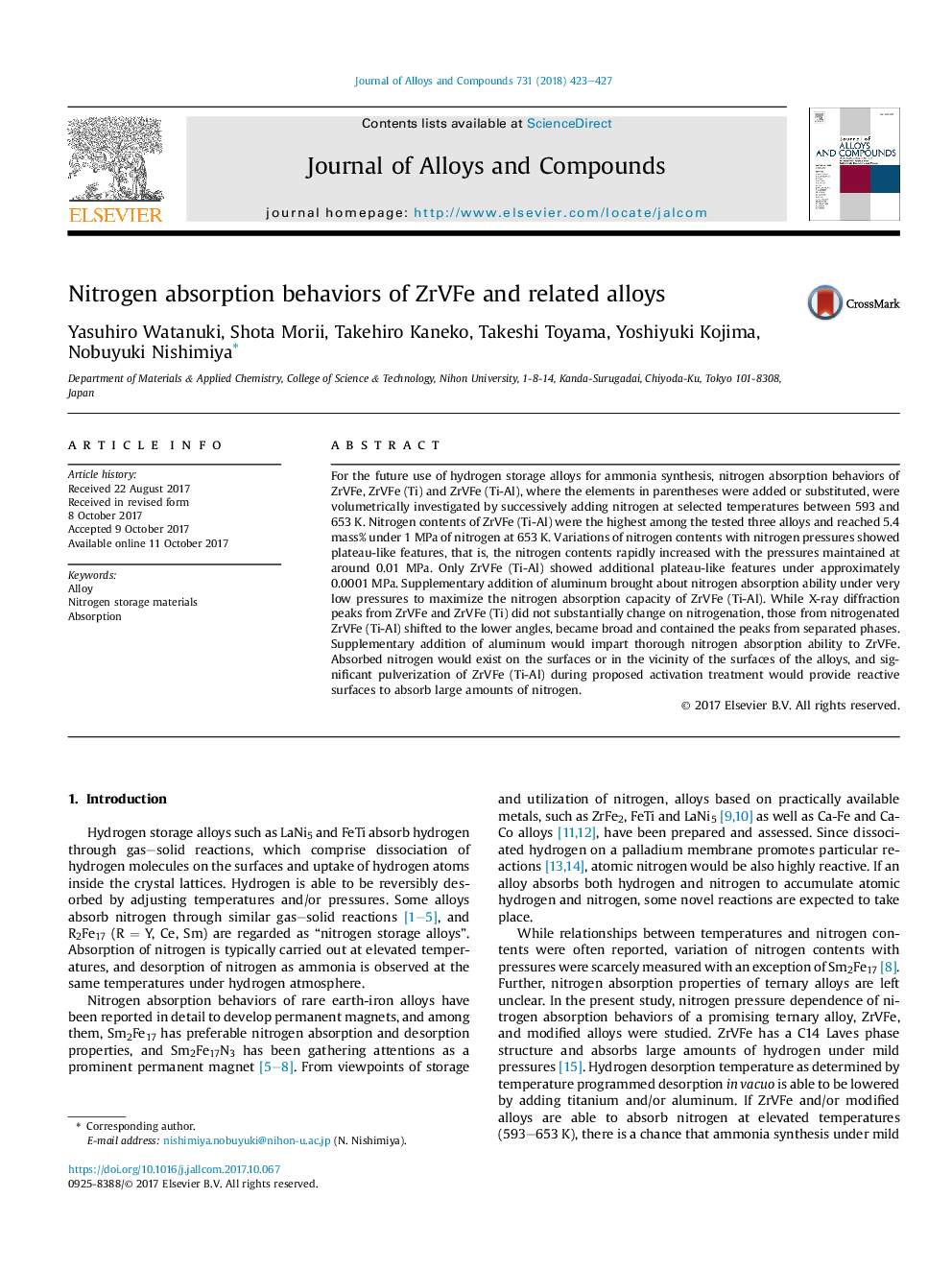| Article ID | Journal | Published Year | Pages | File Type |
|---|---|---|---|---|
| 5458057 | Journal of Alloys and Compounds | 2018 | 5 Pages |
Abstract
For the future use of hydrogen storage alloys for ammonia synthesis, nitrogen absorption behaviors of ZrVFe, ZrVFe (Ti) and ZrVFe (Ti-Al), where the elements in parentheses were added or substituted, were volumetrically investigated by successively adding nitrogen at selected temperatures between 593 and 653Â K. Nitrogen contents of ZrVFe (Ti-Al) were the highest among the tested three alloys and reached 5.4 mass% under 1Â MPa of nitrogen at 653Â K. Variations of nitrogen contents with nitrogen pressures showed plateau-like features, that is, the nitrogen contents rapidly increased with the pressures maintained at around 0.01Â MPa. Only ZrVFe (Ti-Al) showed additional plateau-like features under approximately 0.0001Â MPa. Supplementary addition of aluminum brought about nitrogen absorption ability under very low pressures to maximize the nitrogen absorption capacity of ZrVFe (Ti-Al). While X-ray diffraction peaks from ZrVFe and ZrVFe (Ti) did not substantially change on nitrogenation, those from nitrogenated ZrVFe (Ti-Al) shifted to the lower angles, became broad and contained the peaks from separated phases. Supplementary addition of aluminum would impart thorough nitrogen absorption ability to ZrVFe. Absorbed nitrogen would exist on the surfaces or in the vicinity of the surfaces of the alloys, and significant pulverization of ZrVFe (Ti-Al) during proposed activation treatment would provide reactive surfaces to absorb large amounts of nitrogen.
Keywords
Related Topics
Physical Sciences and Engineering
Materials Science
Metals and Alloys
Authors
Yasuhiro Watanuki, Shota Morii, Takehiro Kaneko, Takeshi Toyama, Yoshiyuki Kojima, Nobuyuki Nishimiya,
